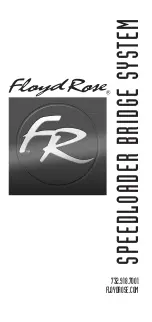
SCPI Command Reference
17-29
tions, the calculation will yield one result every 10 SDM cycles. The fourth
voltage reading (vector 3) and the 10th voltage reading (vector 9) are used
for the calculation.
Now assume that the SourceMeter is con
fi
gured to perform 20 source-
measure operations. Since the vector size is still 10, two 10-reading arrays
will be created. The calculation will now yield two results, one for each
array.
The
fi
rst result, as before, is based on the fourth and 10th readings of the
fi
rst array. The second result is based on the 14th and 20th readings. These
are the fourth (vector 3) and 10th (vector 9) readings of the second array.
Note that you need complete vector arrays to acquire valid calculation
results. If, in the preceding example, the SourceMeter is changed to perform
25 source-measure operations, then the third array will be incomplete (
fi
rst
array is 10 readings, second array is 10 readings, third array is only 5 read-
ings). After the SourceMeter goes back into idle, the
“
Insuf
fi
cient vector
data
”
error message will be displayed, and the third result will be NAN
(+9.91e37).
To avoid incomplete vector arrays, make sure the programmed number of
source-measure operations (arm count
×
trigger count) is a multiple of the
vector array size. In the preceding example, vector array size is 10. Thus, in
order to avoid
“
Insuf
fi
cient vector data
”
errors, the programmed number of
source-measure operations has to be a multiple of 10 (10, 20, 30, 40, and so
on).
The following vector math expression to calculate offset compensated ohms
demonstrates proper syntax:
:calc:math ( (volt[1] - volt[0]) / (curr[1] - curr[0]) )
Notes:
1. Use nested parentheses to force math operations that are imbedded in the
calculation. See the vector math example.
2. A calculation expression can be up to 256 characters in length, including
parentheses and white spaces.
3. When using the
fi
lter, the measured readings used in the calculation are
fi
ltered - NOT the result of the calculation.
4. For vector math, it is recommended that only the REPEAT
fi
lter be used.
For the repeat
fi
lter, the calculations use only the
fi
ltered readings of the
vector points. If you instead use the MOVING
fi
lter, each vector point
will re
fl
ect the
fi
ltered average of all the previous readings in the vector
array.
5. The data format (ASCII or binary) for calculation results is selected
using the :FORMat:DATA? command. See
FORMat Subsystem
. The
*RST and :SYSTem:PRESet default is ASCII.
6. When brackets ([]) are left out of an expression, it is assumed that it is
referencing the
fi
rst vector point in the array (i.e., VOLT is the same as
VOLT[0]).
Summary of Contents for 6430
Page 26: ......
Page 32: ......
Page 78: ...2 14 Connections ...
Page 98: ...3 20 Basic Source Measure Operation ...
Page 138: ...5 30 Source Measure Concepts ...
Page 156: ...6 18 Range Digits Speed and Filters ...
Page 168: ...7 12 Relative and Math ...
Page 176: ...8 8 Data Store ...
Page 202: ...9 26 Sweep Operation ...
Page 248: ...11 22 Limit Testing ...
Page 310: ...16 6 SCPI Signal Oriented Measurement Commands ...
Page 418: ...17 108 SCPI Command Reference ...
Page 450: ...18 32 Performance Verification ...
Page 477: ...A Specifications ...
Page 489: ...B StatusandErrorMessages ...
Page 498: ...B 10 Status and Error Messages ...
Page 499: ...C DataFlow ...
Page 503: ...D IEEE 488BusOverview ...
Page 518: ...D 16 IEEE 488 Bus Overview ...
Page 519: ...E IEEE 488andSCPI ConformanceInformation ...
Page 523: ...F MeasurementConsiderations ...
Page 539: ...G GPIB488 1Protocol ...
Page 557: ......
















































